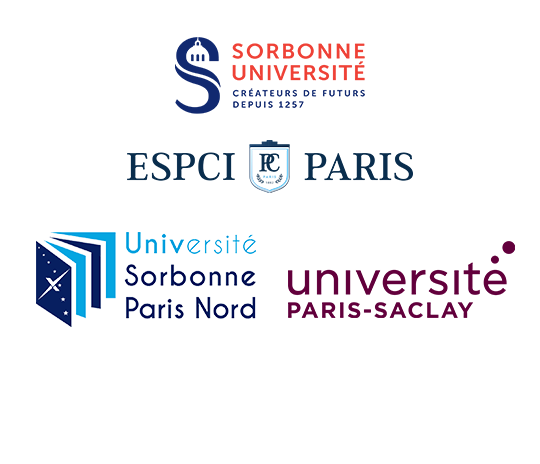This option is devoted to the fascinating domain of cold atoms, when laser cooled atoms have to be considered as matter waves who can intefere, just as electromagnetic waves do. Applications of atom interferometry range from ultra stable atomic clocks which can test general relativity, to the improvement of the GPS or GALILEO systems and oil search by detection of small variations of the Earth gravitational field.
With this option you will also spend half a day in a real cold atom lab, working with researchers in one of the laboratories of the institute for cold atoms in Paris area IFRAF (Institut Francilien de recherche sur les Atomes Froids).
Teachers : Hélène Perrin (CNRS, Université Paris 13) and Jérôme Lodewyck (CNRS, Université Paris 6, Observatoire de Paris) + researches from an IFRAF lab for the lab class.
Objectives:
Understand the basis of laser manipulation of the external and internal degrees of freedom of atoms; learn about precision measurements with cold atoms (clocks, gyroscopes, gravimeters).
Content:
First part (HP):
Lecture 1: light forces
– TD dipole force: optical lattice
Lecture 2: Doppler/Sisyphus cooling
– TD radiation pressure: magneto-optical trap
Lecture 3: Diffraction by a standing wave
– TD Diffraction by a standing wave
Lecture 4: Atom interferometry
– TD Sagnac interferometer (or gravimeter)
Second part (JL):
Lecture 5: basics of atomic clocks
– TD effect of collisions in microwave clocks (or Ramsey fringes)
Lecture 6: noise sources, systematic effects
– TD quantum projection noise
Lecture 7: atomic clocks, atom interferometers and applications
– TD cold atom gravimeter
Lab class:
In addition: a lab class lasting half a day, in a laboratory of IFRAF.
Place: Jussieu (except lab class)
Presentation of the option Cold Matter
Synthetic presentation of Cold Matter (english)


Left: cold cesium atoms confined in an optical dipole trap (HP/LKB)
Right: cold strontium atoms in a magneto-optical trap (JL/SYRTE)
This option is devoted to the fascinating domain of cold atoms, when laser cooled atoms have to be considered as matter waves who can intefere, just as electromagnetic waves do. Applications of atom interferometry range from ultra stable atomic clocks which can test general relativity, to the improvement of the GPS or GALILEO systems and oil search by detection of small variations of the Earth gravitational field.
With this option you will also spend half a day in a real cold atom lab, working with researchers in one of the laboratories of the institute for cold atoms in Paris area IFRAF (Institut Francilien de recherche sur les Atomes Froids).
Teachers : Hélène Perrin (CNRS, Université Paris 13) and Jérôme Lodewyck (CNRS, Université Paris 6, Observatoire de Paris) + researches from an IFRAF lab for the lab class.
Objectives:
Understand the basis of laser manipulation of the external and internal degrees of freedom of atoms; learn about precision measurements with cold atoms (clocks, gyroscopes, gravimeters).
Content:
First part (HP):
Lecture 1: light forces
– TD dipole force: optical lattice
Lecture 2: Doppler/Sisyphus cooling
– TD radiation pressure: magneto-optical trap
Lecture 3: Diffraction by a standing wave
– TD Diffraction by a standing wave
Lecture 4: Atom interferometry
– TD Sagnac interferometer (or gravimeter)
Second part (JL):
Lecture 5: basics of atomic clocks
– TD effect of collisions in microwave clocks (or Ramsey fringes)
Lecture 6: noise sources, systematic effects
– TD quantum projection noise
Lecture 7: atomic clocks, atom interferometers and applications
– TD cold atom gravimeter
Lab class:
In addition: a lab class lasting half a day, in a laboratory of IFRAF.
Place: Jussieu (except lab class)
Presentation of the option Cold Matter
Synthetic presentation of Cold Matter (english)


Left: cold cesium atoms confined in an optical dipole trap (HP/LKB)
Right: cold strontium atoms in a magneto-optical trap (JL/SYRTE)

